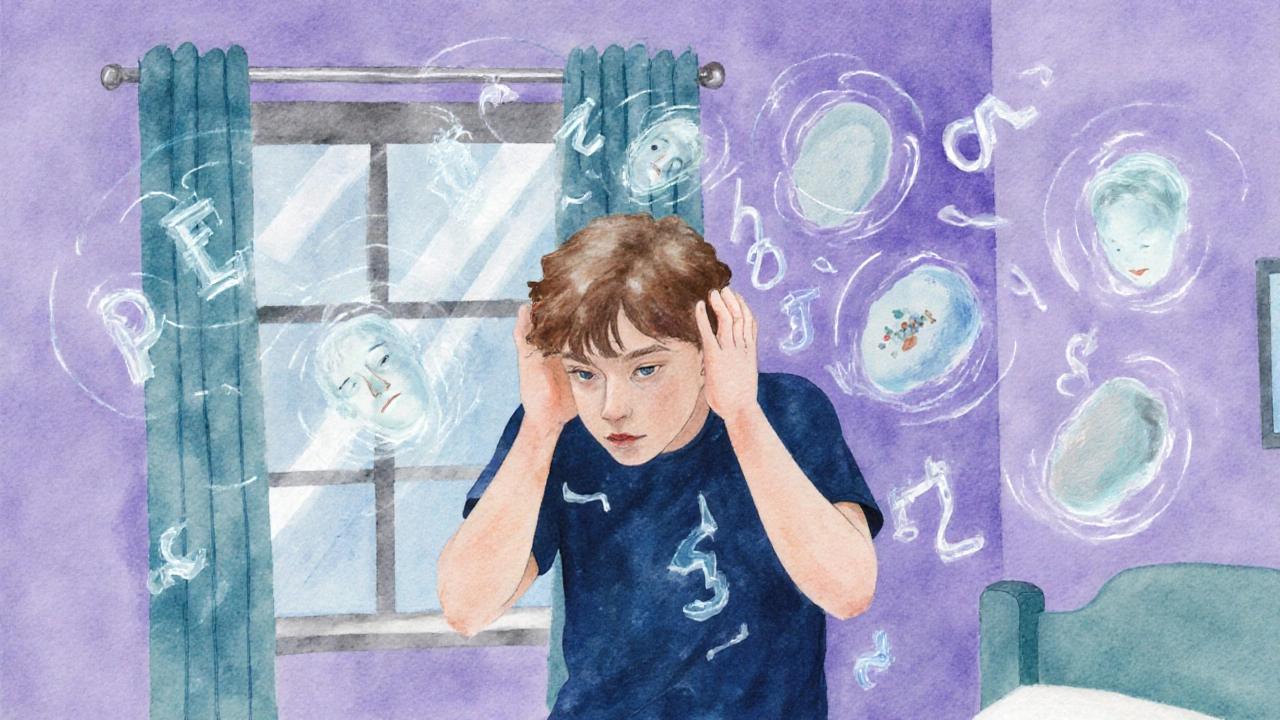Most Brutal Mental Illnesses Comparison Tool
This tool helps compare the most severe mental illnesses based on key clinical indicators:
- Functional Impairment: How much the disorder disrupts daily life
- Suicide Risk: Percentage of individuals at risk
- Treatment Approach: Common interventions used
Functional Loss: High
Suicide Risk: 5-10%
Treatment: Antipsychotics + psychosocial rehab
Functional Loss: Very High
Suicide Risk: 15-20%
Treatment: Antidepressants, ECT, psychotherapy
Functional Loss: High
Suicide Risk: 10-15%
Treatment: Mood stabilizers, psychotherapy
Functional Loss: High
Suicide Risk: 8-10%
Treatment: DBT, supportive therapy
Functional Loss: Very High
Suicide Risk: ~10%
Treatment: Medical monitoring, nutritional rehab, CBT
Functional Loss: Moderate-High
Suicide Risk: Low-Moderate
Treatment: Trauma-focused therapy, medication
Key Insights
- Severe MDD has the highest suicide risk among listed disorders.
- Schizophrenia and Anorexia Nervosa show the highest functional impairment.
- All disorders benefit from early intervention and comprehensive treatment plans.
- BPD is particularly associated with high self-harm rates.
Note: These comparisons reflect average clinical data. Individual experiences vary greatly. Always consult healthcare professionals for accurate diagnosis and treatment.
When people ask about the most brutal mental illness, they’re usually thinking of conditions that completely upend daily life, push people toward self‑harm, and often require lifelong treatment. Below we break down what “brutal” means in a clinical sense and walk through the disorders that fit that description.
Key Takeaways
- Severity is measured by functional impairment, risk of suicide, and chronicity.
- Schizophrenia, severe major depressive disorder, and bipolar I disorder top the list.
- Early detection and comprehensive treatment drastically improve outcomes.
- Support networks and professional help are essential for anyone facing these conditions.
Defining "Brutal" in Mental Health
In mental‑health jargon, “brutal” isn’t a clinical term. It captures three key realities:
- Immense functional loss - inability to work, study, or maintain relationships.
- High mortality risk - especially from suicide or medical complications.
- Persistent, intense symptoms - hallucinations, mood swings, obsessions that dominate everyday life.
Any disorder ticking most of these boxes deserves a close look.
Schizophrenia: A Hallmark of Brutality
Schizophrenia is a chronic brain disorder characterized by distortions in thinking, perception, emotions, and behavior. It typically emerges in early adulthood and affects about 1% of the global population. Hallucinations, delusions, and disorganized speech markedly impair daily functioning. Studies show a 5‑10% lifetime suicide rate, far above the general population. Antipsychotic medication combined with psychosocial therapy offers the best chance for stability, but many need ongoing support for years.
Severe Major Depressive Disorder (MDD)
Major Depressive Disorder is a mood disorder marked by persistent sadness, loss of interest, and physical symptoms that last at least two weeks. When it reaches a severe level, individuals may experience psychotic features, inability to leave the house, and a suicide risk that climbs above 15% in clinical samples. Electroconvulsive therapy (ECT), high‑dose antidepressants, and intensive psychotherapy are often required for rapid relief.
Bipolar I Disorder: The Roller‑Coaster of Mania and Depression
Bipolar I Disorder is a mood disorder featuring at least one full manic episode, usually alternating with major depressive episodes. Manic phases can include reckless spending, risky sexual behavior, or even psychotic thinking, while depressive phases carry the same suicide risk as severe MDD. Proper mood stabilizers and regular psychotherapy can keep episodes in check, but adherence is a major hurdle.

Borderline Personality Disorder (BPD): Emotional Turbulence
Borderline Personality Disorder is a personality disorder characterized by unstable relationships, intense emotional swings, and a chronic fear of abandonment. Up to 10% of individuals with BPD attempt suicide each year, making it one of the most self‑harm‑prone conditions. Dialectical Behavior Therapy (DBT) has strong evidence for reducing self‑injury and improving emotional regulation.
Post‑Traumatic Stress Disorder (PTSD)
Post‑Traumatic Stress Disorder is a trauma‑related disorder that causes intrusive memories, avoidance, hyper‑arousal, and negative mood changes. Combat veterans, assault survivors, and first responders are at high risk. Although suicide rates are lower than in schizophrenia, the chronic nightmares and hyper‑vigilance often wreck relationships and employment.
Anorexia Nervosa: The Physical Toll of a Mental Disorder
Anorexia Nervosa is an eating disorder marked by extreme restriction of food intake, intense fear of weight gain, and a distorted body image. Mortality rates hover around 10%-the highest of any mental illness-due to heart failure, electrolyte imbalance, and suicide. Multidisciplinary care including medical monitoring, nutritional rehab, and cognitive‑behavioral therapy (CBT) is essential.
Substance Use Disorder (SUD): A Dual‑Diagnosis Nightmare
Substance Use Disorder is a condition where the use of alcohol or drugs leads to significant impairment or distress. When combined with another severe mental illness, outcomes worsen dramatically. Dual‑diagnosis programs that treat both disorders simultaneously have the highest success rates.
Obsessive‑Compulsive Disorder (OCD) in Its Most Extreme Form
Obsessive‑Compulsive Disorder is a disorder characterized by unwanted, intrusive thoughts (obsessions) and repetitive behaviors (compulsions) performed to neutralize anxiety. In severe cases, patients may spend up to 12hours a day on rituals, missing work or school. High‑dose SSRIs and exposure‑response prevention therapy are standard treatments.
Comparison of the Most Brutal Mental Illnesses
| Disorder | Typical Onset Age | Key Symptoms | Suicide Risk (%) | Typical Treatment |
|---|---|---|---|---|
| Schizophrenia | Late teens‑early 30s | Hallucinations, delusions, disorganized thought | 5‑10 | Antipsychotics + psychosocial rehab |
| Severe MDD | Any adult age | Deep sadness, psychosis, loss of function | 15‑20 | Antidepressants, ECT, psychotherapy |
| Bipolar I | Early adulthood | Manic highs, depressive lows, psychosis | 10‑15 | Mood stabilizers, psychotherapy |
| Borderline PD | Late teens‑early 30s | Emotional instability, self‑harm, relationship chaos | 8‑10 | DBT, supportive therapy |
| Anorexia Nervosa | Adolescence‑early adulthood | Severe weight loss, body‑image distortion | ≈10 | Medical monitoring, nutritional rehab, CBT |
What to Do If You or Someone You Know Is Affected
Recognizing the signs is the first line of defense. If you notice any of the following, reach out immediately:
- Sudden withdrawal from friends or work.
- Talk of hopelessness, death, or self‑harm.
- Hallucinations or bizarre beliefs that interfere with reality.
- Extreme weight loss or compulsive rituals that dominate the day.
Contact a local mental‑health crisis line, visit an emergency department, or schedule an urgent appointment with a psychiatrist. Early professional help dramatically cuts the risk of chronic disability.
Building a Support System
Healing isn’t a solo journey. Family, friends, and peer groups can provide:
- Daily check‑ins to ensure medication adherence.
- Safe spaces for expressing fears without judgment.
- Practical help-transport to appointments, managing bills, or cooking meals.
Education matters. When loved ones understand the disorder’s biology, they’re more likely to offer compassionate support rather than blame.
Future Directions in Treating the Most Brutal Disorders
Research is racing ahead on three fronts:
- Digital therapeutics - apps that deliver CBT in real time.
- Precision psychiatry - using genetic markers to tailor medication.
- Neurostimulation - advances in transcranial magnetic stimulation (TMS) for treatment‑resistant depression and schizophrenia.
While none of these cures the disease overnight, they promise less invasive, more personalized care for people living with the toughest conditions.
Frequently Asked Questions
Which mental illness has the highest suicide rate?
Severe major depressive disorder, especially when psychotic features appear, often shows the highest recorded suicide rates, ranging from 15% to 20% in clinical studies.
Can schizophrenia be cured?
There is no cure, but antipsychotic medication combined with psychosocial support can help many people achieve a stable, functional life.
Is it possible to recover fully from borderline personality disorder?
Full recovery is rare, but significant improvement is common when patients engage in dialectical behavior therapy and maintain a strong support network.
What distinguishes a severe eating disorder from a mild one?
Severity is gauged by body‑mass index, medical complications, and the presence of suicidal thoughts. Anorexia with a BMI below 15 and cardiac issues is classified as severe.
How do I support a friend with bipolar disorder during a manic episode?
Stay calm, avoid arguing about reality, encourage professional help, and help the person maintain a safe environment-remove dangerous objects and limit access to large sums of money.
